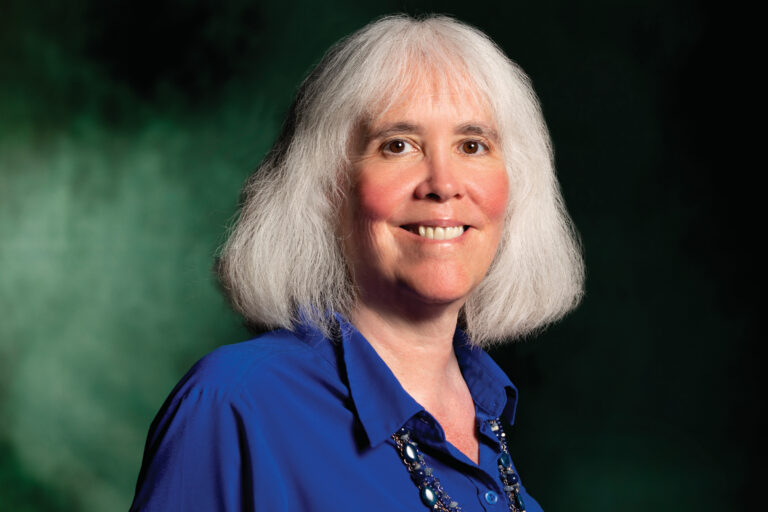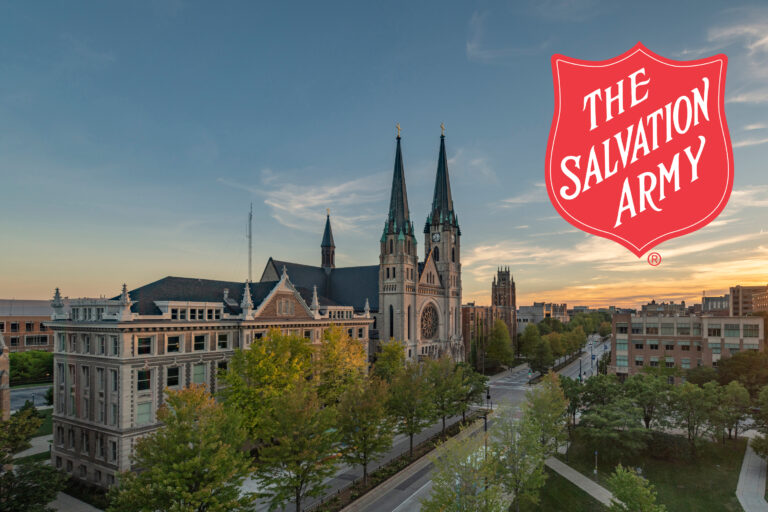Dr. Nate Lemoine discusses traveling to Africa to start researching elephant carcasses
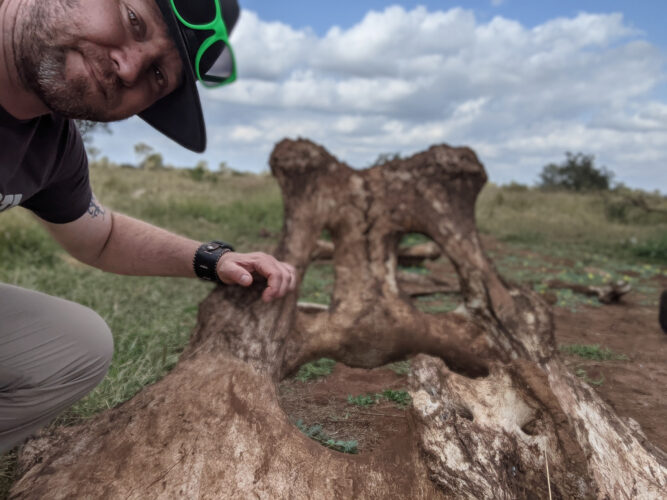
Coordinated by Shelby Williamson and Kevin Keenan in the Office of University Relations
Last year, Dr. Nathan Lemoine of Marquette University announced he and a team of fellow experts would be conducting research in Africa focused on the decomposition of elephant carcasses and how the remains shape the surrounding ecosystem.
That formal research is set to happen in summer 2023.
But in June, Lemoine, an assistant professor of biological sciences in the Klingler College of Arts and Sciences, and the rest of the team traveled to Africa to get a head start.
Here in a Q&A, Lemoine discusses his recent journey to Africa, what he and the team did there, the interesting things he saw and learned, and much more.
Your formal research trip is scheduled for June 2023. What was the purpose of your recent trip a year in advance?
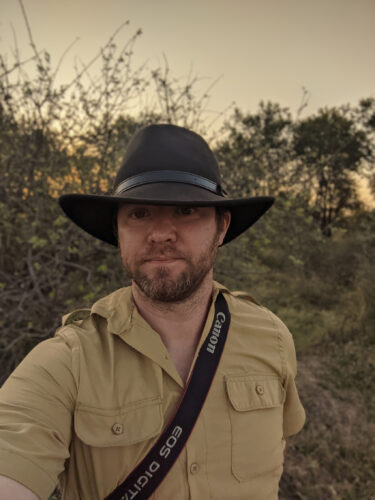 The goal of this project is to understand how elephant carcasses shape African savanna ecosystems.
The goal of this project is to understand how elephant carcasses shape African savanna ecosystems.
When we do this kind of work, our available time is limited. The research team is from several different countries, and even the South African researchers have to travel a considerable distance. We typically have two to four weeks to complete our work. It is imperative that we make our time as efficient as possible.
We work primarily in Kruger National Park, which spans about 7,500 square miles – 1.5 times larger than Connecticut or Puerto Rico, or three times larger than Delaware. Living elephants are easy to find within the park, but carcasses are more difficult. This trip was a “scouting” trip to identify as many workable locations as possible prior to our large research trips. This way our future research trips don’t have to spend two weeks finding sites and can get started taking measurements right away.
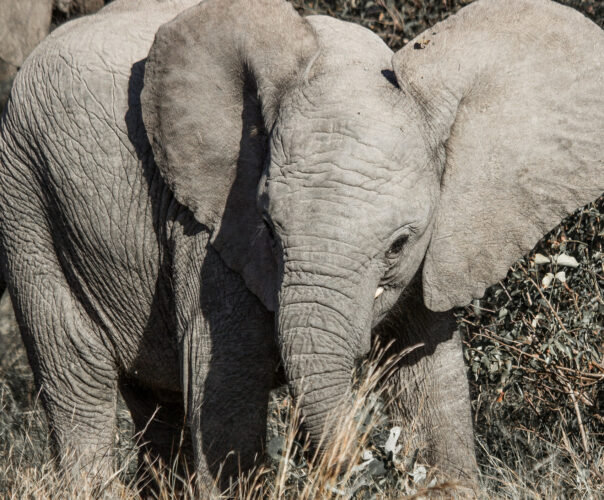
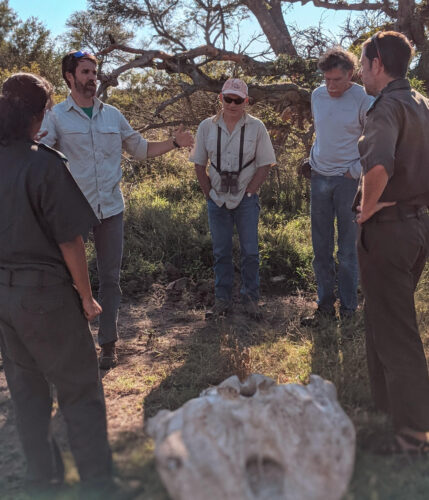 It was also the first time the entire team met in person, and it was the first time many of us had physically seen a carcass site (myself included). This turned out to be invaluable. Many of our preliminary assumptions were incorrect, and we wound up redesigning the entire experiment on the fly over the course of a few days based on what we were seeing in the field. It’s impossible to overstate the importance of first-hand experience. If we hadn’t taken this trip, the first full field trip would have been unsuccessful, but now we have a very solid research plan that we can implement right away on our next visit.
It was also the first time the entire team met in person, and it was the first time many of us had physically seen a carcass site (myself included). This turned out to be invaluable. Many of our preliminary assumptions were incorrect, and we wound up redesigning the entire experiment on the fly over the course of a few days based on what we were seeing in the field. It’s impossible to overstate the importance of first-hand experience. If we hadn’t taken this trip, the first full field trip would have been unsuccessful, but now we have a very solid research plan that we can implement right away on our next visit.
As a bonus, we collected a trove of data (plant communities, plant physiology, soil cores, etc.) from four carcasses that look to confirm our initial hypotheses. We hadn’t planned on collecting any data, so not only were we able to redesign the experiment, but we were also able to test our methods, collect data and refine our approach so that we can hit the ground running with the full team next year.
A small group will most likely visit one to two more times to find more workable carcass sites (workability being defined as the carcass being locatable, being accessible and being in a relatively safe place to work).
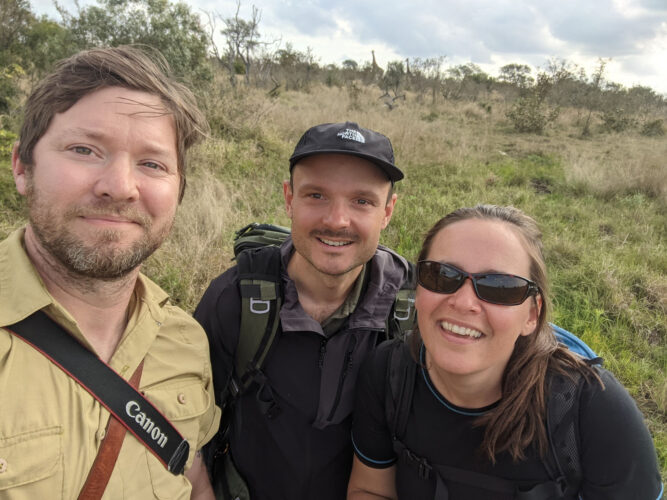
What did you learn on this trip and how has this knowledge helped drive your research looking into next year?
I mentioned this in my earlier answer, but we learned that many of our initial assumptions were incorrect.
We based our project on the idea that elephant carcasses would remain a fairly clustered pile of large bones for several years. It became immediately apparent that carcass bones get dragged over dozens or more meters by hyenas within the year and become very dispersed.
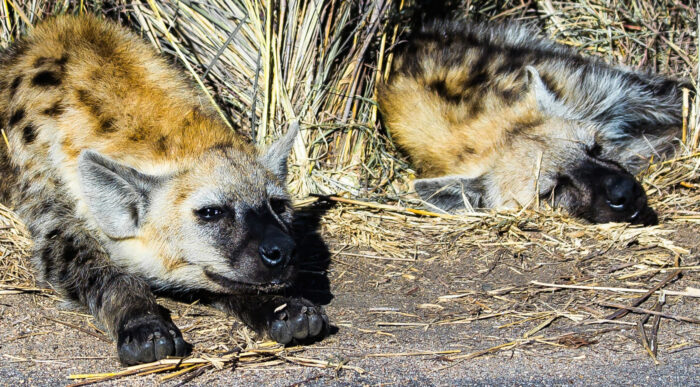
We also noticed that hyenas will repeatedly visit an old carcass site and constantly move bones around to chew on them. So, the first thing we learned is that none of the principal investigators of the research (six Ph.D.s) or grant reviewers (five more Ph.D.s) knew what to expect.
Of course, the game guards and rangers who work out there every day told us that’s what happens. So, there is a lot of fundamental natural history knowledge that isn’t making it out of the park, and we’ve redesigned the experiment to first just identify the temporal dynamics by which elephant bones are moved around: how quickly are bones dispersed, how far do they go, how often are sites visited through time, etc.
This led to us having to redesign the experiment almost entirely, so I would say it has completely changed how we are approaching the experiment in the next years.

What sort of samples did you take while there?
We took a lot of soil samples that stayed in South Africa to be analyzed by a local lab.
We took measurements of soil compaction, plant community composition, plant greenness, and we also took plant samples for chemical analyses.
In the future, we will be collecting more robust plant physiological measures as well as insect and mammal surveys.
Is there any indication of what animals benefit the most from the carcasses of the elephants?
 Not just yet.
Not just yet.
It is obvious that the plants near carcass sites are enriched nutritionally, and we saw evidence of heavy grazing within carcass sites. Our guess is that it is mostly the grass grazers (like impala and kudu) that will have the most benefit. We also predict that grasshoppers will be more abundant on carcass sites. We know that termite mounds also act like nutrient hotspots and that grasshoppers tend to be more abundant directly on top of termite mounds, so we expect to see the same patterns.
And of course, scavengers like hyenas, lions and vultures gain an immediate benefit. And hyenas will repeatedly visit sites to chew on bones for years.
Where did you decide to conduct your research? Were there certain sites that were better than the others?
Based on our observations, we are focusing on extremely young carcasses (under one year) and will follow them through time.
We found a lot of good sites in the southern part of the park, near the main camp called Skakuza. Certain parts of the park, like Pretoriuskop or Melelane, are too woody, which makes carcasses hard to find and makes them relatively more dangerous from a wildlife perspective. While the danger is relative, it becomes an issue because in those habitats we cannot spread out and have to remain in good visibility of our guards at all times, which limits how efficiently we can work in a densely wooded region.
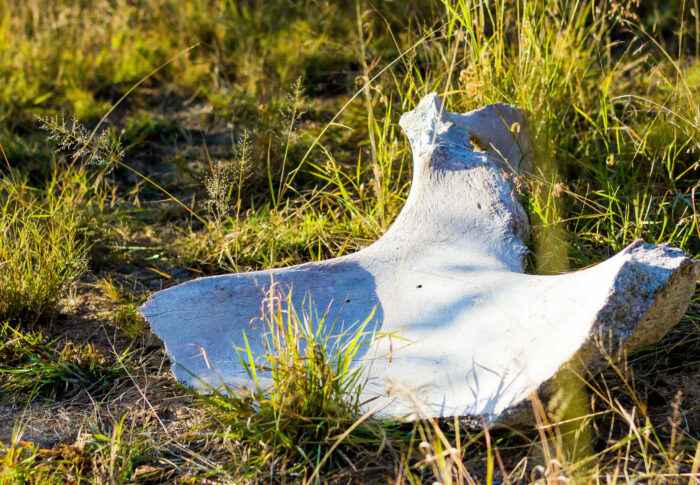
Open grasslands like the Satara region had a lot of great sites to work and have good visibility. The issue there is some of those sites are one to two kilometers from the road, so we have to strap our equipment on our backs and carry it in (there are no trails, either. It’s wilderness walking).
What did you need to do to prepare for this trip?
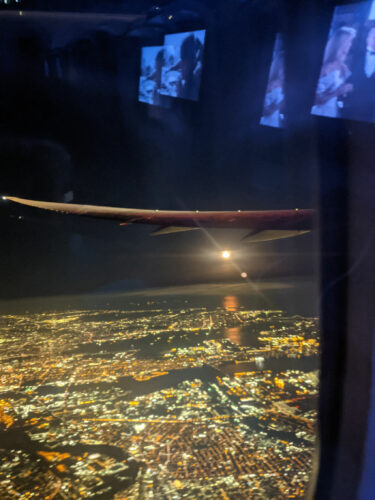 The first thing you need is flexibility and patience.
The first thing you need is flexibility and patience.
It’s a long trip. I had to fly two hours from Milwaukee to Denver, four hours from Denver to Newark, then it’s a 15-hour flight across the world to Johannesburg. Once in Johannesburg, you have to get a hotel to sleep in after 30 hours of travel. Wake up the next day and either fly (one-hour flight) or drive (eight hours) to KNP. Then, two weeks later, do it all again on the way back.
You also have to prepare to be out of contact for a while. There is no internet in the research village, and cell service in the park is nonexistent outside of the main camps. To me, I enjoy the chance to unplug, but a lot of people bring in portable Wi-Fi devices or cell plans to maintain connectivity.
You need an open mind about diet, which is easy to do in South Africa because South African cuisine is amazing with a big Malaysian influence. But it can be quite different.
When it comes time to do the full research, we will have to pack up several large cases of equipment and have it shipped over to SANParks prior to our arrival (and hope it gets there). We have to locate South African research suppliers for consumables like needles, gas and other things we usually get right next door in the valley from Sigma and Airgas. We need to line those things up beforehand to make sure all of our supplies are ready and waiting for us when we get there, because deliveries into the park can take weeks.
Malaria in the park is rarely an issue but can occur at certain times of year in some places. We need to be aware of where we are going and when to know if we should pack anti-malarial medications. Some people react poorly to those, so it often winds up being a tradeoff. Fortunately, the park has a very robust malaria monitoring program (it is a big tourist destination, after all).
And of course, nothing can mentally prepare you for walking in the wild with elephants, cape buffalo, giraffe and antelopes for the first time.
What was your favorite part about the trip?
 All of it, honestly.
All of it, honestly.
I’m an ecologist, I love working outdoors in the true wilderness and being unplugged for a few weeks. There is no way to explain to someone in North America how it feels to work in a part of the world where humans are not the top of the food chain, or even the most important or dangerous thing out there.
All images within this story were taken by Nate Lemoine

